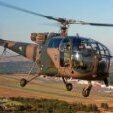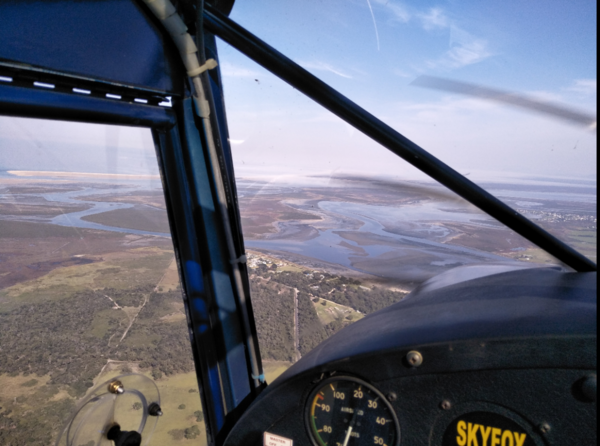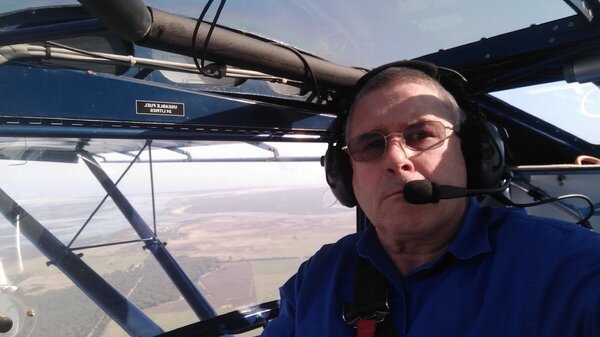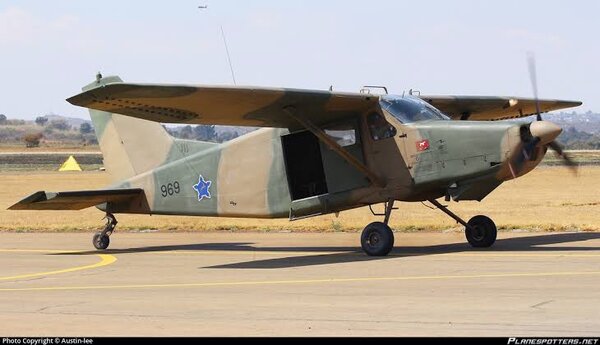-
Posts
459 -
Joined
-
Last visited
-
Days Won
17
Content Type
Profiles
Forums
Gallery
Downloads
Blogs
Events
Store
Aircraft
Resources
Tutorials
Articles
Classifieds
Movies
Books
Community Map
Quizzes
Videos Directory
Everything posted by F10
-
Would be a great area to fly a Searay or similar amphib’.
-
Great machine for a flying school! Even has a stick at the back so an instructor can ground brief manoeuvres to the student!
-
Last trip was from Yarram-Leongatha-Yarram, not far, but I’m sure you know haw long the drill is, getting the bird out the hangar, re fuelling, pre flight, daily coffee, catchup with mates…plus the Gazelle is known by many…but will never be known for it’s cruise speed! However, it was a lovely day, Southern Gippsland is a lovely area, and coastline. We have had good rain, so the countryside is a bright emerald green, like flying over Ireland. Smooth air generally. Gosh but wind farms are butt ugly….sorry but they are. Look like some horrible alien invasion fleet planted on the landscape. Leangatha is interesting, lots of hangars going up and re-surfacing of the main apron. Crop sprayer training quite busy. Nice big grass parking ares a. Rain has made the ground quite soft however. Saw a very nice retro looking Pietenpol in Ray’s hangar and a sad sight. One of my favourite aircraft, a C177 Cardinal, looking sorry for itself long grass growing under it, in the parking area. You gotta wonder the circumstances that lead to such a nice machine standing idle. After lunch, I went out to get going and I decided to pull her forward out of these small trenches the tyres had sunk into due soft ground. Otherwise full power to taxi….or full power….no taxi….followed by red face! Flight back was fun and scenic. Shot two circuits at Yarram, so there were my 90 days three landings ticked! Then put her to bed, followed by another coffee and catch up with mates! Drove home with that nice satisfied feeling, the itch well and truly scratched for the next three days anyway!
-
Flying down the Caprivi strip Namibia, at about 1500 ft AGL, I was surrounded by scattered grey columns of rain showers. They were quite well defined, not very wide. One was directly across my track. The aircraft got quite dusty in the bush and I prided myself in keeping it as clean as I could. So, I thought in my young inexperienced mind…fly through it and get a nice wash for free. The fact I couldn’t quite see through it, should have….sounded a small tinkling warning bell…as I went in, the rain became a torrent. This aircraft had a fast and quite powerful windscreen wiper, it was totally swamped. I could only see the ground looking straight down, very bumpy, then to my eternal disappointment, the Kudu started descending, full power, all 340 horses and 11% flap, had no effect…the tops of the trees loomed up, as we staggered along at landing approach speed (didn’t want to go slower in this turb). Then, what felt like 5 ft above the trees, she stopped descending and shortly afterwards we popped out, in clear air. The aircraft was nice and sparkling clean….my flying overalls were not… We had of course flown through a column of descending air, coming down with the rain. A microburst is the same, but is far more intense and dangerous…, the descending air, pushing me down. The downdraft stopped as it mushroomed out against the ground, I can only assume the forest had also caused a drop on wind speed as normal, you have a headwind going in, followed by a sudden tailwind going out. This effect again, far worse with a microburst. This tailwind can be strong enough to cause a dangerous loss of speed…luckily the aircraft at full power was not greatly effected, plus my Guardian Angel, who I think was driven to drink… On the next trip, you would have seen a C4M Kudu, doing wide S turns around columns of rain….Pic of the mighty C4M “Koe-doef” (my landing sounds) below.
-
Flown an RV once, very nice. The Chippie has very sweet handling for normal flying. Not great for aerobatics I think personally. The energy levels are quite low and I found initial roll rate is good, but once the damping in roll comes into equilibrium with the aileron input, the sustained roll rate is quite slow to what I was used to. However, many pilots flew Chipmunks in aerobatic competitions, I think there was a Chippie category in fact. Some modified Chipmunks, often with a one piece bubble canopy, were quite good. As I recall, there was a bungee chord setup on the brakes, so with a few notches of brake applied, you got a burst of brake, but to me, rudder was not effected. However this made control on takeoff and landing, good, with basically automatic differential braking with any rudder input. Applying full brakes, handle fully back, would slightly limit rudder input. I never spun it, but they did have some issues, not sure why. It has a staggered tail plane, (tail fin located ahead of the tail plane) so rudder blanking should not be a problem. Rear CofG I think, would not be good in a spin, as with most planes. Basically it’s a fun machine and a very nice “baby warbird” as such! The Brits have always used hand operated brakes, right up to the Vampire jet and Shackleton. It’s interesting to think if it wasn’t for their love of hand brakes, Douglas Bader would not have been able to fly agin……this may have made some Germans happy however!
-

Warbird forced to ditch at beach airshow
F10 replied to red750's topic in Warbirds, Vintage and Classic Aircraft
Anyone seen the subsequent investigation into this….turns out not so good! The engine in the aircraft had been giving trouble. Early on in the flight, other pilots reported he was trailing smoke…but continued. Sad, a rare and beautifully restored warbird, 10 year restoration I think, pretty much destroyed. -
Just looking at the Thruster engine position and pilot position, seems there will not be much distance between the main gear wheels and the CofG. So handling shouldn’t be too challenging? When you have a bit of distance, a swing on take off or landing throws the CofG out, causing the weight to try “overtake” the main wheels, aggravating the swing. Tricycles have the opposite effect, the CofG ahead of the mains, tends to have a tendency to straighten or pull the aircraft straight. The little Luscombe (spelling?) was a tricky taildragger, those gear legs were very far forward….To me also one of the reasons you should hold off the nose wheel on landing, and get it off early on takeoff. Helps keep her straight. When I land the Gazelle, I hold the nose wheel off as long as possible. On take off, I get it off as soon as the elevator has enough control authority, to allow pitch control, BUT…make sure you hold the climb attitude, allowing the aircraft to accelerate and lift off when it’s good and ready to fly. What can happen is if you over-rotate, get the attitude too high, this can again cause more drag and reduce take off acceleration. Or worse, get airborne very close to the wing critical angle or stalling angle, not good! Holding the nose wheel off on landing, also allows a bit of aerodynamic braking immediately after touch down, Aerodynamic braking drag in other words, quickly dissipates as speed reduces, but is good for killing of that initial speed immediately after touch down. Watch U tube clips of the fighters touching down at Oshkosh, you will see what I mean. The air brakes pop open and the pilots old the nose up, for max form drag. Of course increasing nose wheel contact time is required when it comes to a cross wind. I read an interesting comment in “Kitplanes”, when some old and bold salt said “What’s a nose wheel for? Something to attach a tow boom to!” I agree. Don’t you just love aerodynamics!
-
That’s taking first class seating to a new level! Not only better comfort, but they can even offer the advantage that you will be the first to arrive….impressive!
-
That’s one of the things I love about recreation flying, you fly exactly when where how…(within the rules of course🥸), you want to. Flying for a living is a great career, but there are times, when you don’t want to…but have to. That’s when flying can become a job, rather than a passion. I am lucky that most times I enjoyed myself. But it was great when I got back into flying for fun, and bought the Gazelle. Because I got all that old schoolboy enthusiasm back, when as a young kid, just being at an airfield was exciting. I did a flight last week Tuesday in the Gazelle YYRM-YLEG, decided to get a flight in before this whole legion of LP troughs and fronts starting marching across Vic…rain for a week. Air was nice and smooth and the countryside is looking fantastic…bright emerald green. Like that one good golf swing, with clean contact, a flight like that, keeps you coming back for more. To hell with the Juju! Normally just before climbing aboard the Gazelle, I will take a quick walk behind the hangar, to get rid of that Juju! 😉
-
The Chipmunk, a fantastic aircraft with very sweet handling. As such I think it was easy to fly, very easy for a tail dragger. The brake lever ratchet system is ingenious, allowing for auto differential braking, with rudder inputs if you pulled the brake handle back 3-4 clicks. It must have been a great step up from the Tiger Moth. Loved flying the Chippie!
-
Will heck my Shell oil bottles, but I think it was mineral? They are far away in Yarram sadly! Interesting about the bores, Yes tapering a cylinder bore would be complex, easier with tapering the piston. However, the piston would get very hot very fast. I was told that on a Piaggio Lycoming GSO 430 I spent some hours behind, the barrels were tapered, maybe inserts? We were threatened with death if we didn’t warm up properly….literally with death….engine failure after takeoff type death! Nice engine, but noisy as hell!
-

Vans RV-7 crash, S of Charters Towers 23/04/2021
F10 replied to onetrack's topic in Aircraft Incidents and Accidents
Yes, tricky as this is 3000ft AMSL, inland across the dividing range, it changes to at or below 1000ft AGL. Nice and easy! -

Vans RV-7 crash, S of Charters Towers 23/04/2021
F10 replied to onetrack's topic in Aircraft Incidents and Accidents
My understanding is, special VFR means you must be able to fly visually, but need nor comply with those VFR limits in class D, as long as you won’t interfere with an IFR aircraft. This is to allow a departure from a class C/D airfield, in less than desirable weather. It is at pilot request, a controller won’t clear you special VFR. SVFR not permitted in Class E. I need to revise this stuff, been a “G” man for too long! -
My understanding is, Tetra Ethyl Lead (TEL), back in the 70’s (in South Africa anyway), was in car fuel, things like MG’s and Austin’s, didn’t have hardened valve seats, as the valves were lubricated. Hardened seats came out in later car engines, when TEL was ditched, due to TEL pollution concerns. Yes, it’s primary function was anti “knock” or anti detonation. But newer car engines with hardened seats, could run happily on leaded, but running a “soft” valve seat car engine on unleaded, led to whaling and a gnashing of teeth! Because Rotax are designed to run on no TEL Mogas, I still wonder why the valves have an issue. But, I will still comply and try to avoid AVGAS.
-
The pain of this is of course, Mogas not available at most airfields. I’m most definitely not a left leaning greenie, but in this case, roll on unleaded AVGAS, yes! Rotax manual, apart from lead sludge buildup in your oil tank and gearbox, the manual says it also erodes valve seats increases valve recession which is strange to me…I thought the whole purpose of lead was to lubricate valve seats and prevent seat wear?? I try to only top up with Avgas occasionally if I have to. So far, I’ve not had to. You get those fancy 20 litre bladders you can chuck in your baggage bay. Trouble is, you will need to cadge a lift to a Mogas garage, to fill it up.
-
Some warbirds have an electric pre- lube system. Probably installed after receiving the first Merlin engine overhaul invoice…..I have been told, air cooled aero engines tend to have tapered piston bores, to allow for heat expansion, the cylinder heads being hotter. Winding on power before warm up, makes me wince….scoured bores and broken piston ring time. I’m a fan of semi synthetic oil, from what I’ve experienced with cars and motorcycles….can you use semi in a Rotax 912? I know full synthetic can cause rubber oil seal issues, hence the semi synthetic. I warm up till oil temp needle moves. I think considering the relatively high RPM of Rotax engines, a good thing? Certainly the compression check on my engine shows almost new engine values, which makes me stop my nervous pacing during the test!
-
The pain of this is of course, Mogas not available at most airfields. I’m most definitely not a left leaning greenie, but in this case, roll on unleaded AVGAS, yes! Rotax manual, apart from lead sludge buildup in your oil tank and gearbox, the manual says it also erodes valve seats increases valve recession which is strange to me…I thought the whole purpose of lead was to lubricate valve seats and prevent seat wear?? I try to only top up with Avgas occasionally if I have to. So far, I’ve not had to. You get those fancy 20 litre bladders you can chuck in your baggage bay. Trouble is, you will need to cadge a lift to a Mogas garage, to fill it up, for re-fueling.
-

Vans RV-7 crash, S of Charters Towers 23/04/2021
F10 replied to onetrack's topic in Aircraft Incidents and Accidents
My understanding is, special VFR means you must be able to fly visually, but need nor comply with those VFR limits in class D, as long as you won’t interfere with an IFR aircraft. This is to allow a departure from a class C/D airfield, in less than desirable weather. It is at pilot request, a controller won’t clear you special VFR. SVFR not permitted in Class E. I need to revise this stuff, been a “G” man for too long! -

Vans RV-7 crash, S of Charters Towers 23/04/2021
F10 replied to onetrack's topic in Aircraft Incidents and Accidents
Oh yes D, my bad, cheers! Yes, throw in “special VFR” and it gets more confusing! -

Vans RV-7 crash, S of Charters Towers 23/04/2021
F10 replied to onetrack's topic in Aircraft Incidents and Accidents
Loss of control in IMC is a huge killer. One very tragic case to me was the loss of that beautiful DH Dragon Rapide in QLD. Two days later, the weather was gin clear. I lost a good mate in a CFIT due weather. Heavy airframe icing was a factor. Happened on a Friday. Walking to the Sqn buildings after parking my car, Monday morning, the sky was blue, with unlimited vis…..two days….just two days. -

Vans RV-7 crash, S of Charters Towers 23/04/2021
F10 replied to onetrack's topic in Aircraft Incidents and Accidents
Agree. 5 km is actually pretty bad! Another thing which is a twist, these vis limits are a pilot responsibility…one mans 1000 ft is another mans 500 ft…..but legally this puts the onus on you. As far as I recall, you can be at 500 ft below cloud base, but only in Class C, otherwise 1000 above and below. An ex RAF Phantom pilot who did an exchange tour with the Luftwaffe, he said they flew in Europe low level, at 420Kts, in 3 Km vis…I asked how on earth could you navigate in that vis at 7 miles a minute? He said, 10 tons of Phantom at 420Kts, heading and time worked like a charm! Short legs, you would need a 90Kt surface wing to drift that beast 100m off track! -

Crosswind landing debate • Redux (Go the crabs)
F10 replied to Garfly's topic in AUS/NZ General Discussion
Cheers! Another interesting discussion I think, are flap types. Cessna uses Fowler flaps, they travel outwards and down, creating a converging duct between the flap leading edge and wing trailing edge. This duct accelerates airflow over the flap, holding off boundary separation (stall) he flap is like a little aerofoil at the back of the wing. Because they travel outwards they even increase wing area. 747 has “triple slotted” Fowlers, three converging ducts, greater wing area, three “little wings”. Great flap system but complex and heavy, so you won’t see it in GA. Next best, the PC9/Harvard for example used “split flaps”, bottom section of wing trailing edge hinges down. Normally stretch full span of wing, from aileron to aileron (some aircraft STOL can even droop the ailerons) their advantage is your wing top surface area is not reduced with flap down, yet increase bottom surface wing camber, overall lift increase. Plain flaps, Cherokee 140 an example. Simply, the a section of the wing trailing edge hinges down. Work ok, least effective flap type however, but cheap, light weight and easy to build. Thus on a lot of GA aircraft. -
POWER + ATTITUDE = PERFORMANCE. Set the correct power, select the correct flight attitude (for climb, straight and level, descending whatever) and the ASI, VSI and Altimeter can do what they like. Use your GPS ground speed reading to help on final approach. Practice stalls at a safe height, with the airspeed covered up, so you can get to “feel” the light buffet. Sadly big jets will bombard you with all sorts of audio warnings and flashing captions, because the computers get fooled. Airbus aircraft will start doing weird “reversionary mode” things like trimming fully nose up if the computer is fooled into thinking the jet is over speeding…so, my sympathy to those aircrew confronted with this in IMC and at night. Air France 447 an interesting very tragic case study.
-

Dan Gryder from probable cause in Cessna 150 crash.
F10 replied to Thruster88's topic in Aircraft Incidents and Accidents
Why select 40 degrees when he didn’t intend to land? A runway inspection should be done at “one notch” of flap I would think. Golden rule: Up to around 12 deg, lots of lift increase, for slight drag increase. +12 Deg and more, slight lift increase, with lots of drag increase. My take on it. High drag on final is desirable, as speed control is easier, more predictable. The aircraft responds faster to power changes, on final. Especially if you are flying a jet approach, controlling speed with power. Works well controlling glideslope aspect with power, constant speed. Older jet engines had lots of throttle lag, high drag allowed an approach to be flown with higher percentage power settings, leading to faster throttle response. However, take offs and runway inspections should beat a lower takeoff flap setting, I heard Dan even say he didn’t intend to land, so strange the 40 deg flaps? Finally, can’t understand why Cessna would allow a flap setting that puts the aircraft a marginal performance situation. I do think the Fowler flaps on Cessnas are the best in GA aircraft. Split flaps a close second. -
Oops…might still be interesting to a new Gazelle owner today however?









